You don’t need a lot of space to be able to grow herbs or edible plants. Starting your own balcony herb garden is the perfect way to grow a variety of herbs, whether it be for cooking, herbal teas, or even cocktails! And it’s easy too!
In this guide, we’ll have a look at everything you need to know to get started.
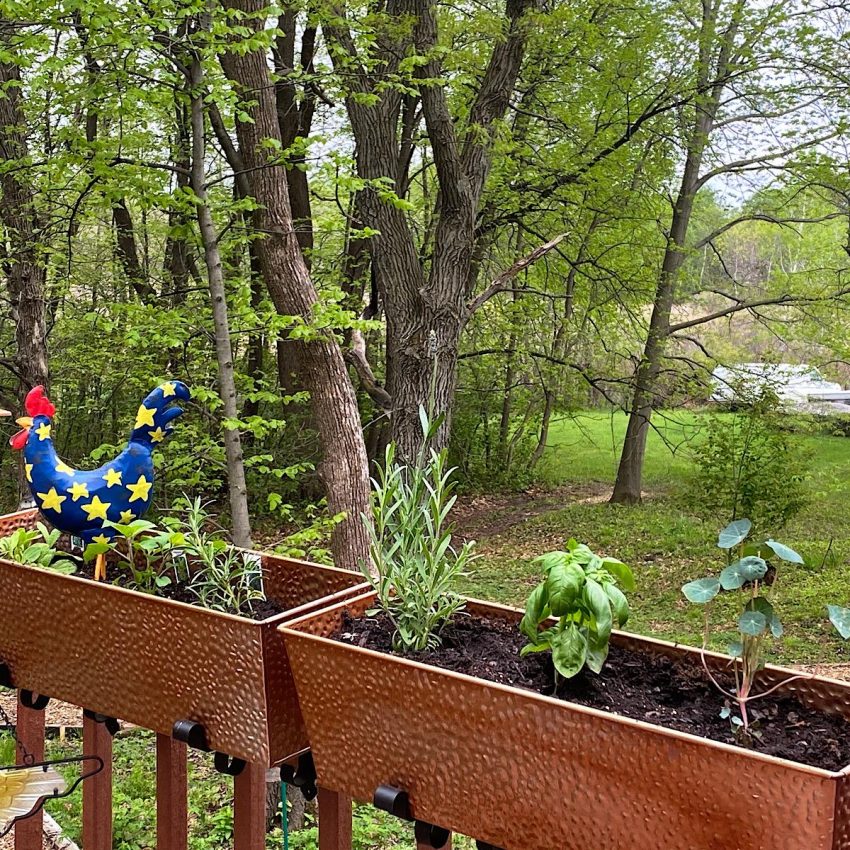
Jump to: Which Herbs to Use | Design Ideas |Herb Care & Maintenance
This post may contain affiliate links. As an Amazon Associate, I also earn from qualifying purchases. You can read our disclosure information here–
What Is A Balcony Herb Garden?
Urban gardening in small spaces has steadily been gaining popularity.
More and more people have moved to cities and don’t have access to a full-sized backyard garden, but that doesn’t mean edible plants are off the table (so to speak)!
That’s where container gardening comes in, and a balcony herb garden is a perfect match for containers and small spaces.
Herbs are a particularly good choice for a city garden for these reasons:
- You don’t need much space to grow them, for starters.
- Experience is not a prerequisite either, as many types of herbs are a breeze to grow even for beginners.
- The possibilities are almost endless. And you can design your balcony garden with herbs that blend into your cooking preferences.
- Gardening in general is relaxing and therapeutic and can be a chance to wind down from a busy day.
- And finally, nothing beats the flavor of home-grown produce!
What Are The Best Herbs For A Balcony Herb Garden?
There is a huge variety of edible herbs, especially if you think beyond the obvious candidates.
Before you start putting your herb garden together, think about what you want to grow (and eat). You can go in so many different directions with a balcony herb garden.
If you fancy yourself a bit of a mixologist, for example, why not go for a little cocktail herb garden? Mojitos taste a lot better with homegrown mint.
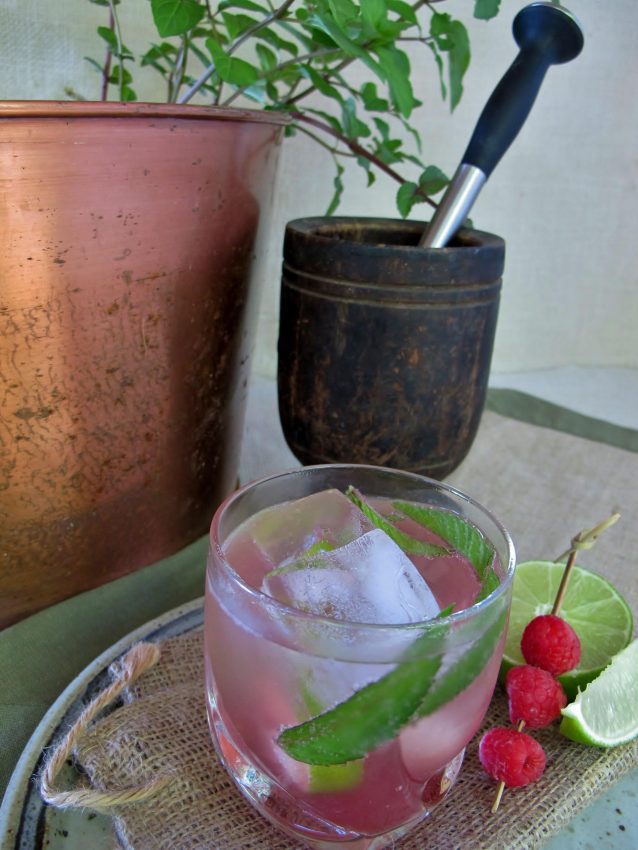
Or if you’re more into blending your own herbal teas, there are a ton of herbs that work well for these “tisanes”.
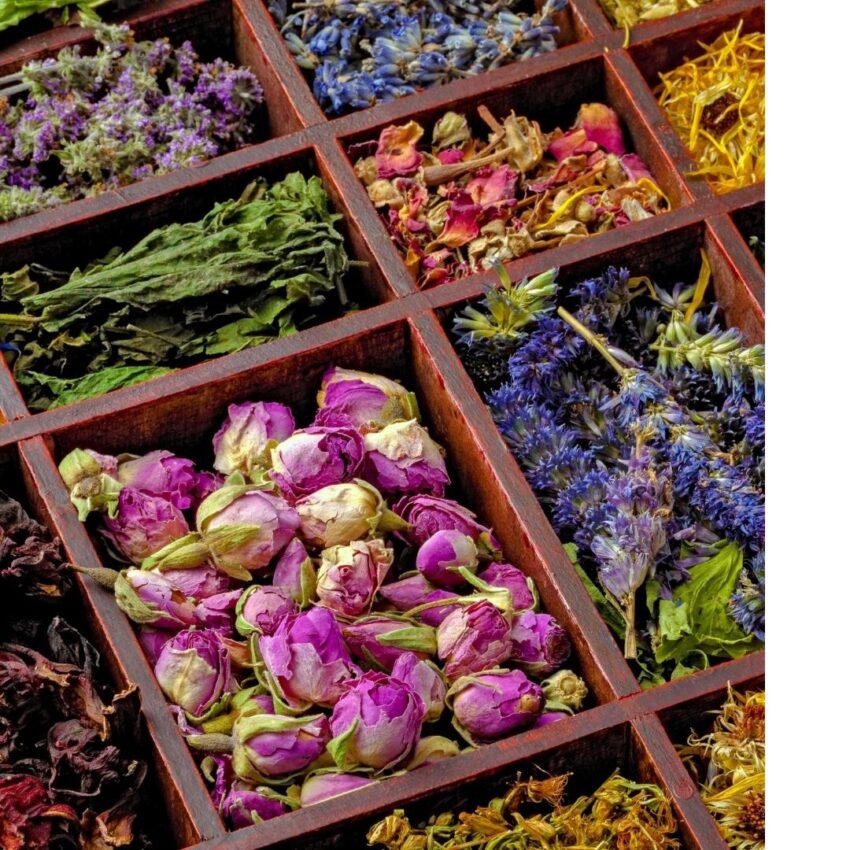
I love to cook, and I designed my 2022 balcony garden around several different culinary themes to provide inspiration for recipes of different cultural cuisines!
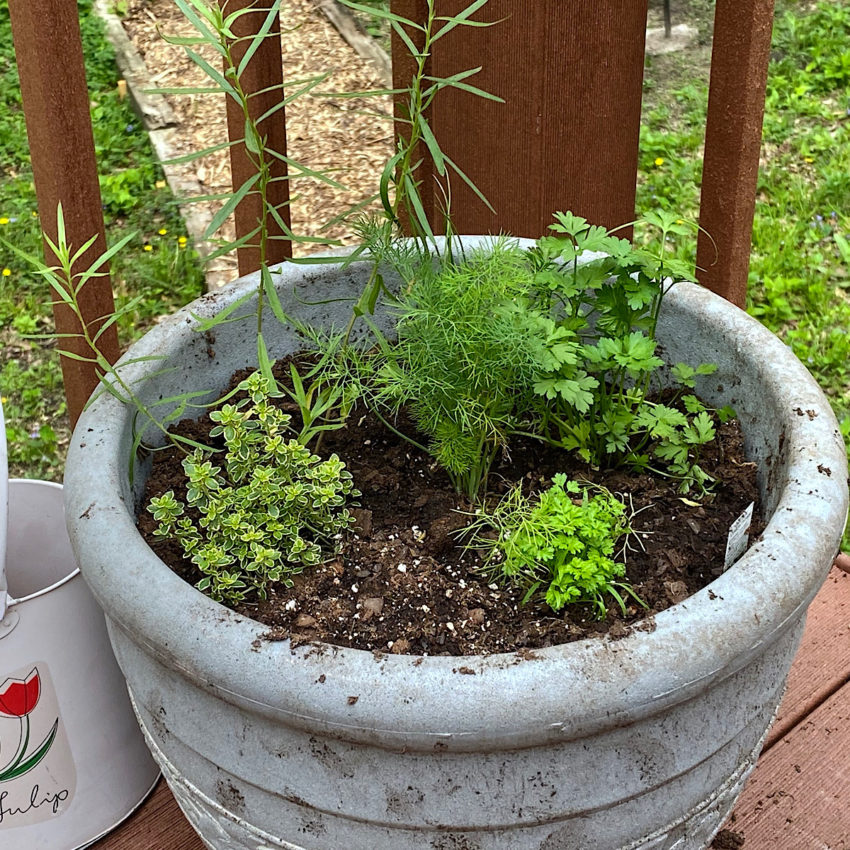
Did you know? Most all herbs are “cut-and-come-again” (i.e., they don’t mind being snipped regularly). Pinching them usually just makes them come back bushier than before.
Annual Herbs
Annual herbs live for one (or sometimes two) years. They generally have to be replanted every spring.
Popular annual herbs include:
- Basil
- Cilantro
- Fennel
- Parsley (biennial)
- Chamomile
- Dill
- Chervil
- Caraway (biennial)
- Stevia
Perennial Herbs
Perennial herbs come back every year. In warmer climates, they may not die off during the winter months.
Popular perennial herbs include:
- Thyme
- Mint
- Sage
- Bay
- Oregano
- Lemon balm
- Tarragon
- Rosemary
- Bee balm
- Calendula
- Watercress
- Catnip
- Lavender
- Valerian
- Chives
- Hyssop
- Lemon verbena
- Marjoram
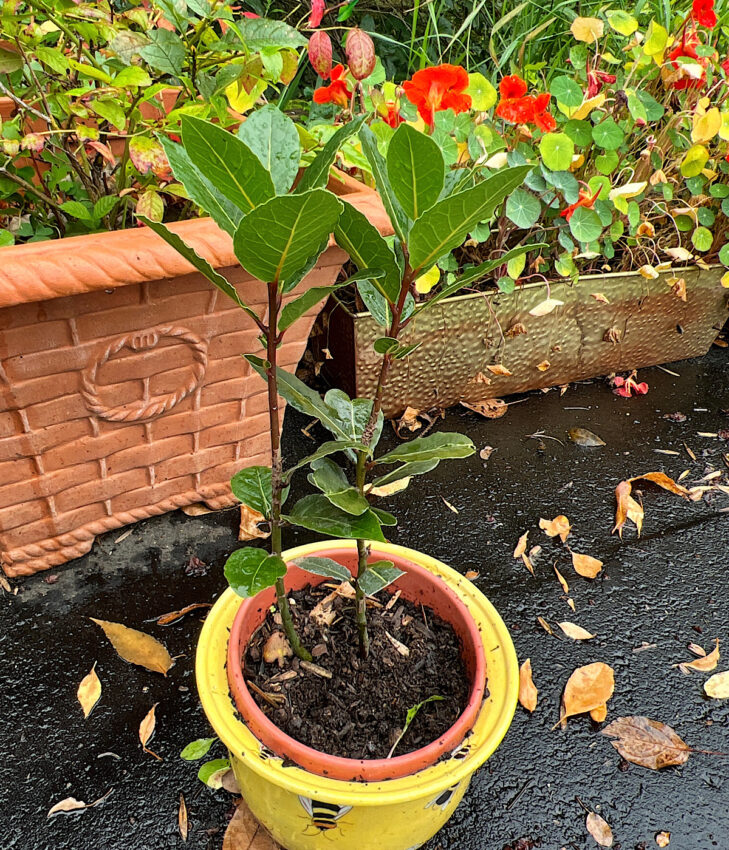
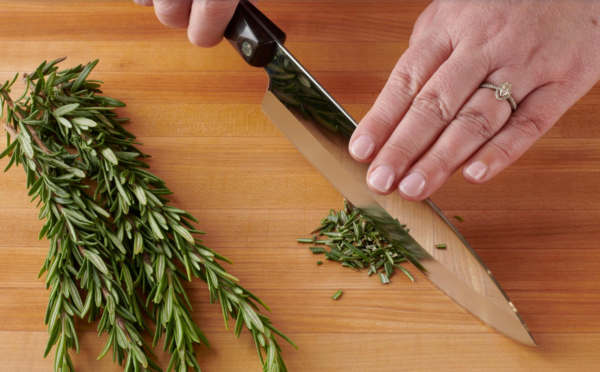
Buying Seedlings vs Starting From Seeds
Many herbs can be started from seed at home.
However, whether you want to germinate them yourself is another thing. Well-established seedlings for most herbs are inexpensive and many varieties are available at local farmers markets in the Spring.
Tip: When deciding on purchasing seedlings vs starting from seed, consider buying the slow growing herbs like lavender or rosemary and starting from seed the easier annual herbs like basil or cilantro.
If you’re buying herbs, go for healthy-looking plants that aren’t squeezed into tiny pots. They should also already be hardened off (i.e., ready to plant outside).
If you’d like to buy online, Bonnie Plants has a good selection of herbs available.
Balcony Herb Garden Design Ideas
Once you’ve figured out what you’d like to grow in your balcony herb garden, it’s time to think about design.
Space will be limited, so where will you be placing the herbs?
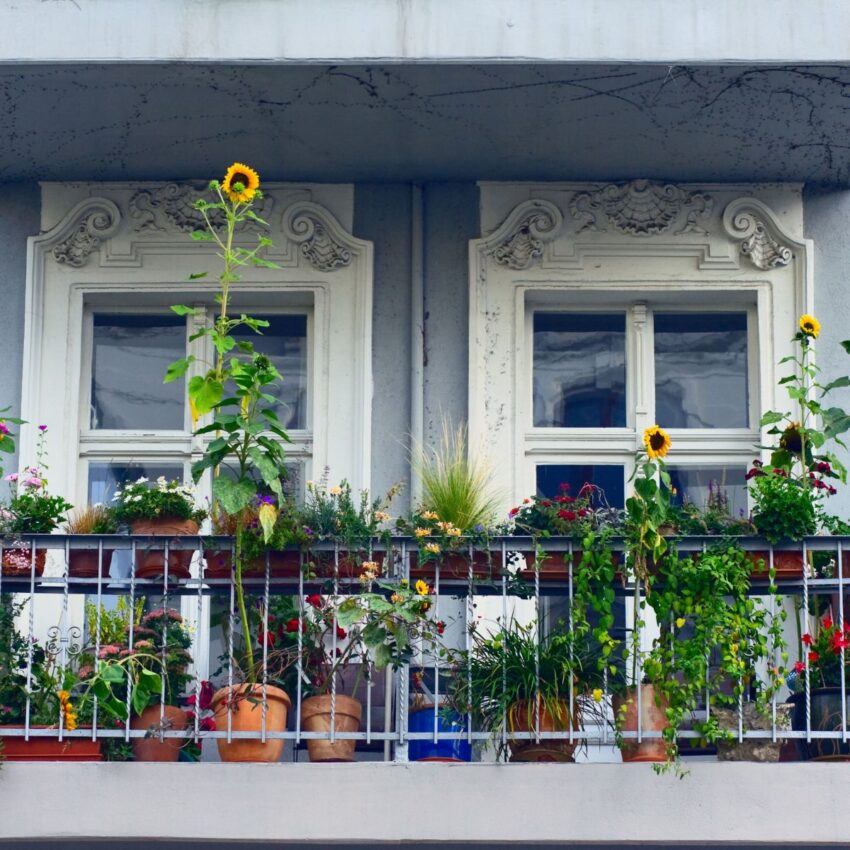
It’s all about finding a balance between giving the plants what they like without stuffing your balcony so full you can’t even sit or walk around anymore.
Below, let’s have a quick look at some of my favorite design ideas for balcony gardening.
Not all of them will work for all types of balconies, but there are plenty of ideas to choose from.
Vertical Herb Garden
A great way to design a space-saving garden is to go vertical.
You’ve probably got more wall space available than precious floor space, so why not use it?
There’s no need to go for expensive pre-made vertical gardening solutions either. Even just shelves and hanging planters can come in quite handy.

You can find everything you need to know about vertical gardening, including design ideas, in my full post on growing food without the land.
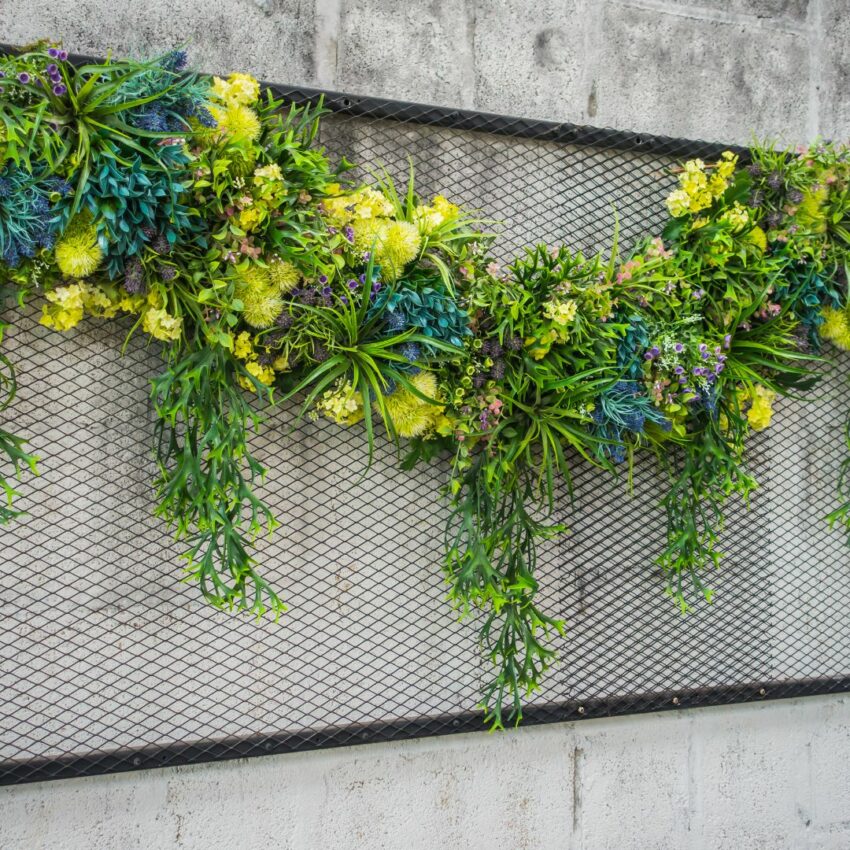
Balcony rail garden
If your balcony has a rail that’s just sitting there unused, you’ve got a little goldmine of gardening space on your hands.
There are many different types of railing planters available, which can be hung from or suspended on the balcony rail to grow plants without taking up floor space.
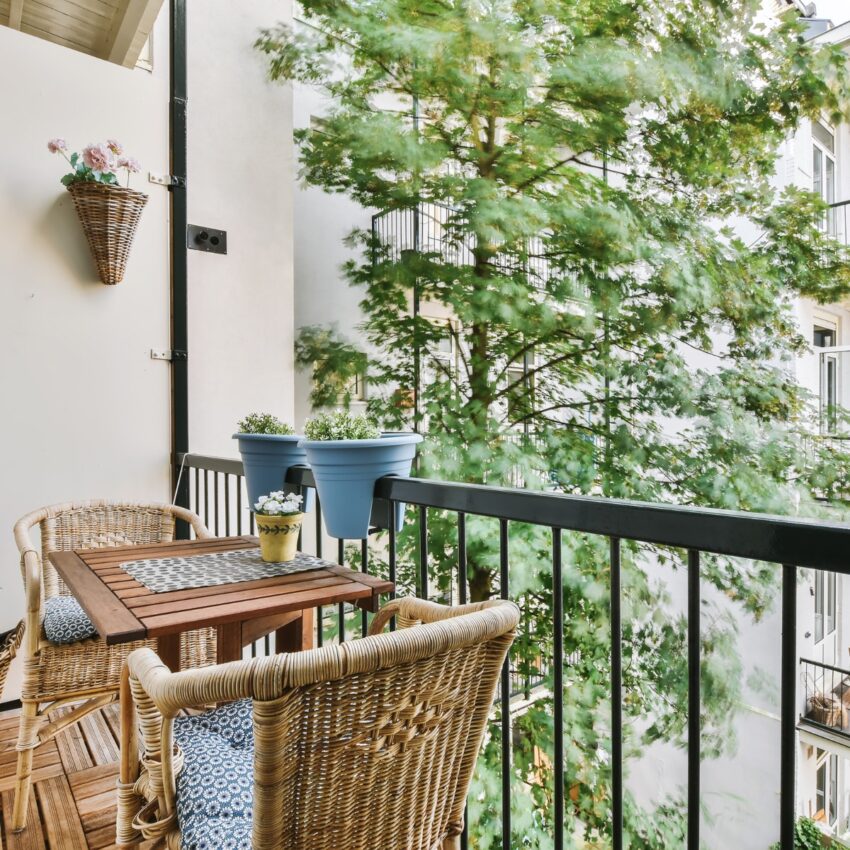
If you’re going for a planter that hangs from a railing, be sure to choose something sturdy. You don’t want to wake up one morning after a windy night to find out your herbs have gone flying through the city!
Edge garden
If you do want to place some herbs on the floor of your balcony, the best spot to put them is, of course, along the edges. This is space that you’re unlikely to use much yourself.
Long rectangular planters or square planters (rather than round pots) are a great space-saving option here.
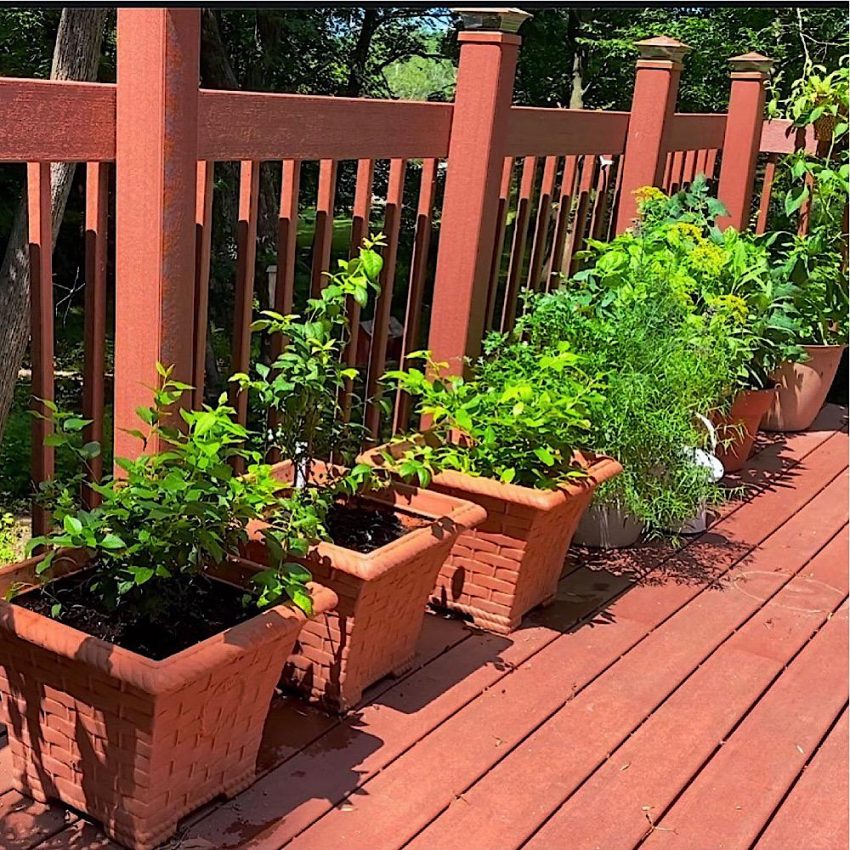
Balcony Herb Care and Maintenance
Once you’ve picked the herbs you’re interested in and have more or less designed your balcony herb garden, the hardest part is over.
As mentioned in my guide to growing herbs in containers, the plants should be easy enough to maintain as long as you keep these three basic rules of thumb in mind:
- Light (6 hours or more of sun for Mediterranean herbs)
- Potting Soil (not garden soil from outside)
- Water (think about what is below your balcony if you are hand watering)
It’s always a good idea to look up the requirements for a particular plant, just to make sure you’re giving it what it needs, but here are the key components to herb care:
Light
Most herbs like plenty of sunlight, with some yearning for full sun. Examples of these are Mediterranean herbs like basil, rosemary, lavender, sage, and oregano. Give these guys the brightest spots on your balcony if you want them to thrive and grow quickly.
Herbs that can do with a little less light include mint, chives, lemon balm, parsley, and cilantro. These species don’t like to grow in the shade, but you don’t need to give them the best sunny real estate to get them to grow well either.
Potting up into larger containers
The herbs you’ll find for sale at your local nursery are usually still planted in small plastic nursery planters.
Their roots can be root-bound, so it’s usually a good idea to repot them into something bigger when you get the chance.
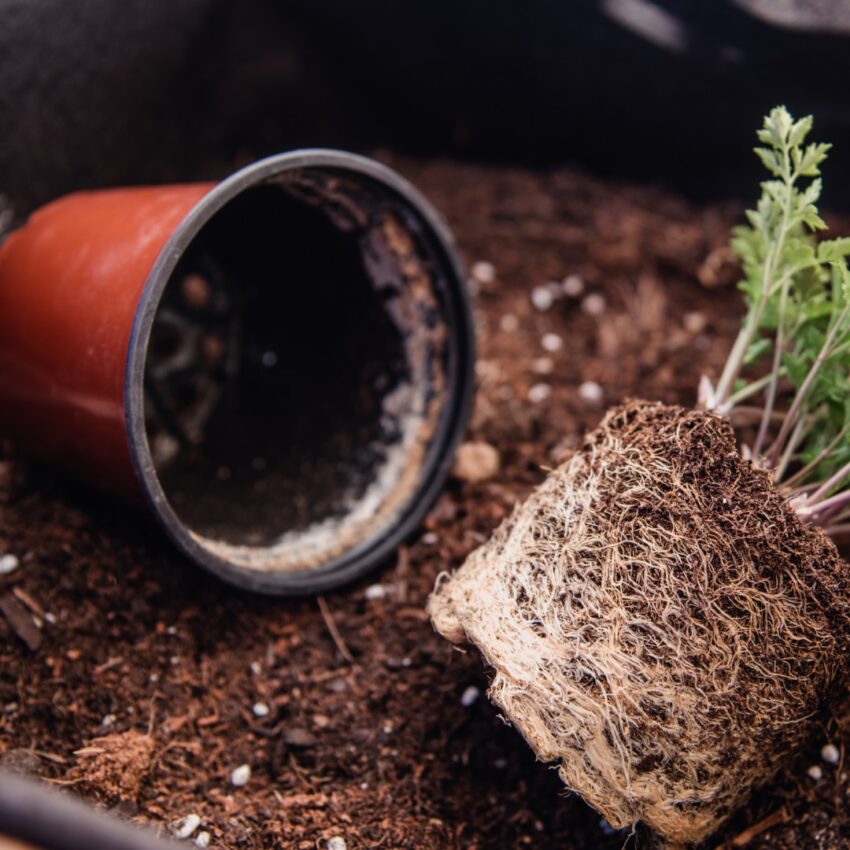
Tip: There are many different options for potting up: railing planters, hanging baskets, grow bags, stackable, space-saving herb planters, and of course, terracotta pots! As long as it has a drainage hole in the bottom, it should work.
I’ve been experimenting a lot lately with grow bags, which should make a great choice for herbs that need excellent drainage.
They are not as attractive as terracotta pots of course, but they work well for getting good yields from seasonal plants.

Tip: Be sure to plant slow growers with other slow growers, because space-hogs like mint can easily choke out other herbs if you give them the chance.
Soil
Just as different herbs have varying preferences when it comes to light, they also differ in the type of soil they like.

Most of the high-light-loving varieties, like rosemary, have evolved to adapt to arid climates.
This means that their roots aren’t adapted to sitting in water, so they generally like well-drained soil (breathable grow bags would be a good option here).

Other herbs like lots of moisture and won’t appreciate their soil drying out.
For these, it’s best to include less grit in the soil medium, or use plastic planters that hold the water longer.
Plants in containers can dry out quickly, and a single hot day can cause the plant to wilt. Examples of plants that might need more moisture include mint, cilantro, and parsley.
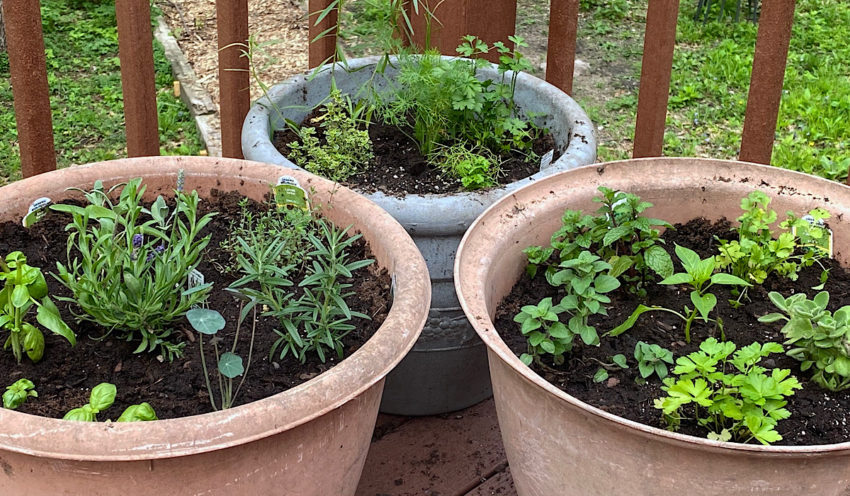
Watering
It can be a bit of a challenge to figure out when and how much to water your herbs, especially if you don’t have much experience in maintaining a balcony herb garden yet.
I can’t tell you how often you should water your plants, as that depends entirely on factors like the season, the soil type, the plant type, and the weather.
But I can give you some rules of thumb.
- Leafy herbs (mint) need more water than woody ones (rosemary).
- Herbs may need water daily in summer and as little as once a week during fall/winter.
- You can pick up the pot to gauge its weight; if it’s light, that means the soil is dry and the plant probably needs a drink.
- You can also stick your finger in the soil. If it still feels damp down to an inch, wait a little longer.
- If your herbs start to wilt, you’ve either waited too long OR overwatered so much that root rot has set in. If the soil is regularly soggy, it’s probably the latter. Take it easy!
When watering, you can give the soil a good soak until moisture starts running out of the drainage hole in the pot. It should be able to drain freely into something like a saucer, after which you can discard the excess.
Summary chart of light and water for a few popular herbs:
| Plant | Full Sun – Well Drained | Less Sun – Moist |
|---|---|---|
| Basil, Rosemary, Sage | Yes | |
| Lavender, Oregano | Yes | |
| Mint, Chives, Parsley | Yes | |
| Lemon Balm, Cilantro | Yes |
Tip: For hanging baskets and planters located higher up, it’s handy to use something like a watering wand to help you reach them.
Fertilizer
If your herbs are doing well and it’s been a few months since you last repotted them, they might appreciate a little extra boost to keep them going.
Usually, they will show signs of depleted nutrition like yellowing of the leaves (which means they need more nitrogen).

Lack of phosphorus will show up as purple leaves and potassium is what helps overall health, sizing, and flavor.
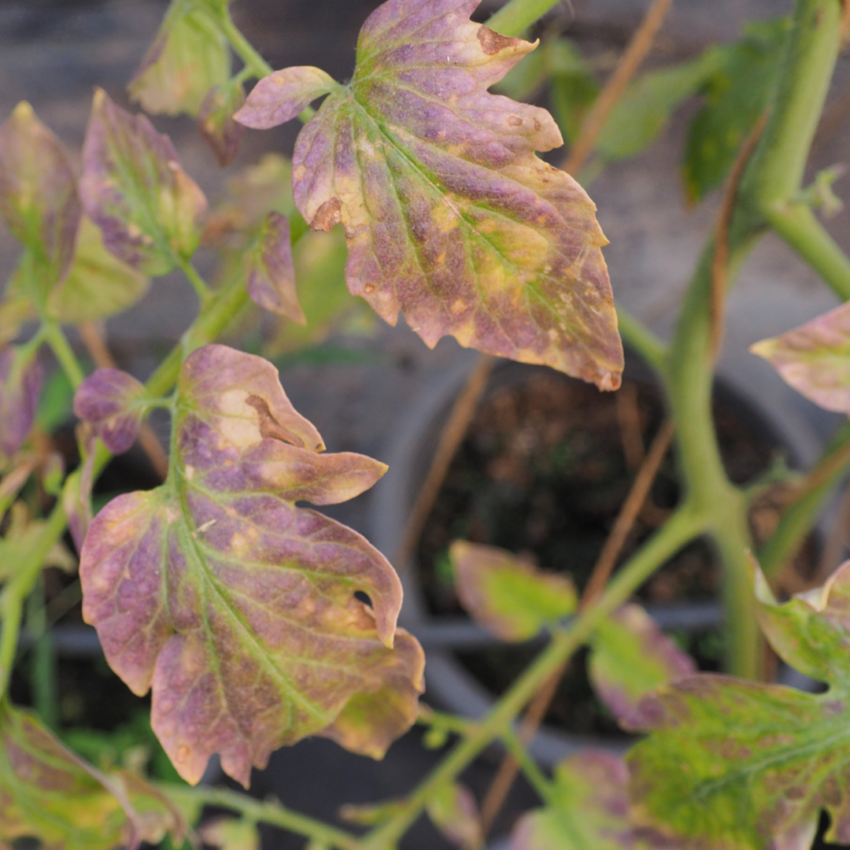
A good overall fertilizer with balanced N-P-K should be fine for herbs. If you used a lot of good compost in your soil mixture you may not need fertilizer at all.
If you do think they need some fertilizer help before the season’s end, you can use a few slow-release fertilizer sticks, but many gardeners prefer using fertilizer powders that can be dissolved in water.
Unless it stays warm year-round where you live, your herbs probably won’t need any fertilizer during winter, as they’ll be mostly dormant.
Take Note! Some of the nutrients will wash out if your herbs get watered too frequently. This is especially true if the herbs are in fabric or clay containers.
In general, you will know when your herbs need fertilizer. They will let you know by the color of their leaves or the speed in which they to re-grow after trimming.
Pruning
With many herbs, pinching them back encourages them to grow fuller and bushier. That should be easy: you’ll be doing so anyway as you harvest them for your meals and drinks!
Tip: Woody herbs like rosemary and lavender should receive a good pruning once a year. Early spring is a great time to do this, but you can also opt to prune after they’ve finished blooming in late summer.
Lastly, in some herbs, like basil, flowering is discouraged. Letting the plant bloom can affect its flavor and deplete leaf growth, so most herb gardeners prefer to pinch off the little flowers as they appear.
You don’t have to throw those basil flowers away, however. They have a mild flavor and look very pretty in a nice garden salad.
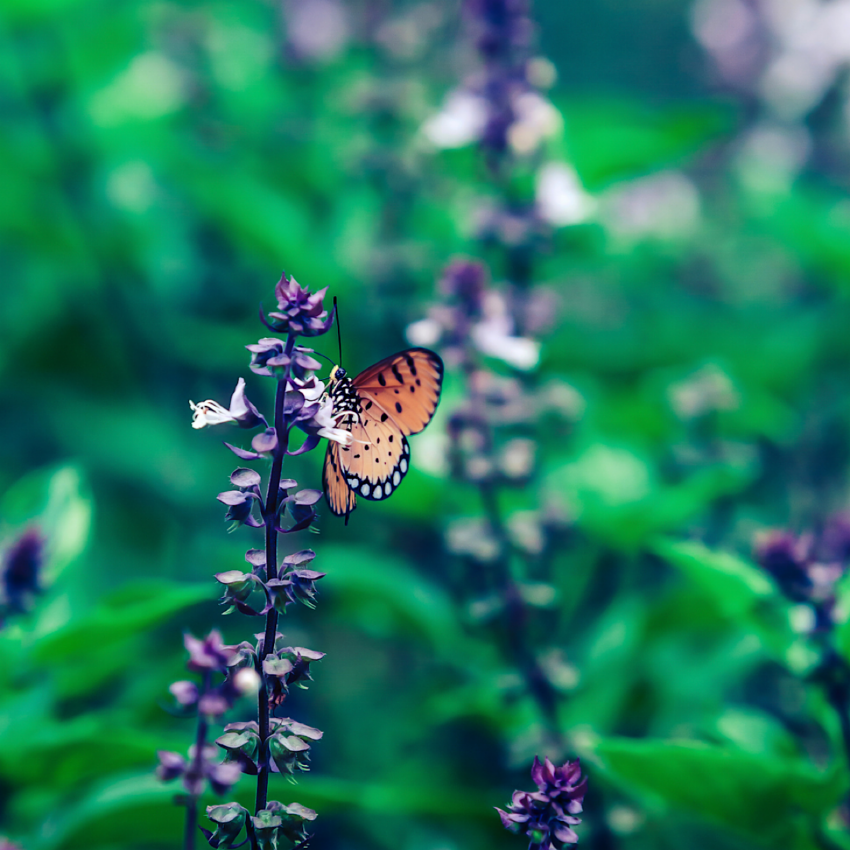
Harvesting
Most herbs can be harvested throughout summer. Don’t wait until their growing season is almost up: harvest regularly when they’re at their best.
You can always freeze the excess, or use it for herbal salts or herbal compound butters.

Herbs that are grown (partially) for their seeds, like cilantro or dill, can be harvested once the seed heads have turned dry and crispy.
Tip: If you need a lot of an herb at once, don’t worry. You can remove one-third or up to half of many species at once without any ill effect.
Troubleshooting Common Problems
Growing your own balcony herb garden isn’t considered difficult. However, what you do need to keep in mind is that you’ll almost inevitably run into some type of issue at some point.
It’s just part of gardening and working with things that are alive. I try to consider it a learning opportunity rather than a setback. 🙂
Bugs
Yep, aphids, mealybugs, and other crawly things are mighty good at finding plants to infest, even in the city. You can combat them by regular inspection of the leaves and then taking quick action.
Insecticidal soaps or home remedies like a mix of water and dish soap will do wonders with most small bugs.
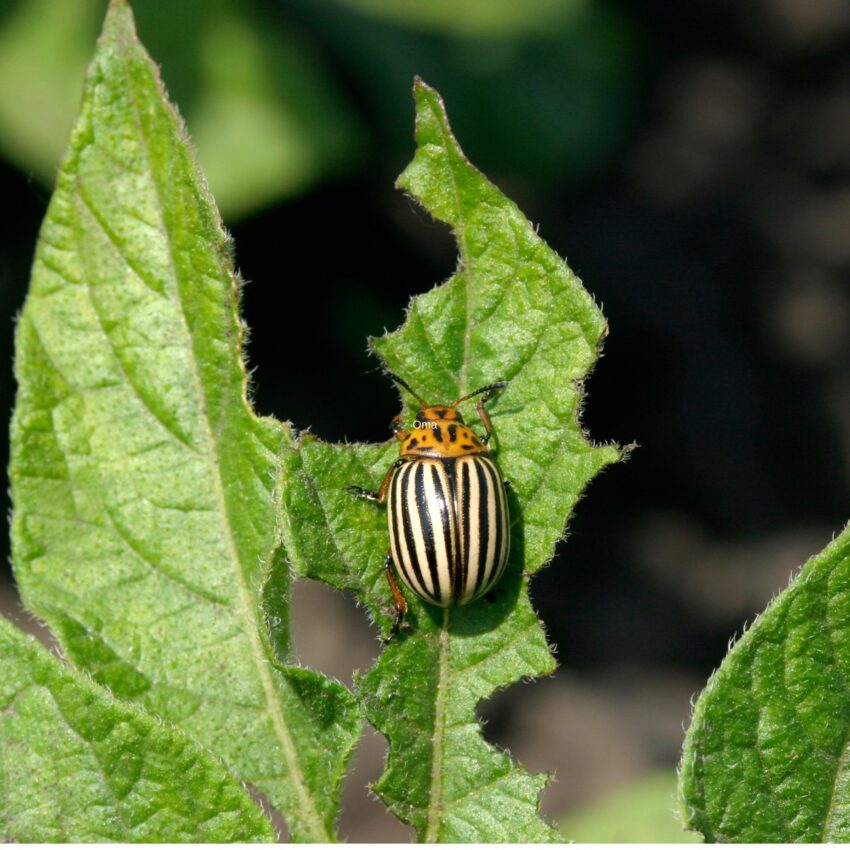
Wind
Wind is probably one of the biggest problems for balcony gardens. Balconies can often be exposed to the elements and don’t benefit from surrounding tree cover or cover crops like in the garden.
Tip: Wind will dry your plants out quicker than lack of water and the stress it causes can be very detrimental. The most fragile plants are best grown against one of the balcony walls.
You can also reduce the soil level in the pots a bit to create a small “wall”, use protective wire cages, or grow stronger plants in front of weaker ones to break the wind.
8 Keys for a Prolific Balcony Herb Garden
- Buy healthy herbs to start with – not root-bound ones.
- Acclimate herbs before exposing them to bright light or harsh wind.
- Briefly research each species’ care requirements.
- Don’t plant too many herbs in a single container.
- Always keep drainage in mind. Excess water needs to be able to leave the planters.
- Don’t combine herbs with different lighting and watering needs or growth rates.
- Prune and pinch (most) herbs regularly for bushy growth and to prevent bolting.
- Watch for signs they need fertilizer.
Solutions For Winter
It’s all fun and games ’till winter rolls around… or is it?
Although growing your balcony herb garden is mostly a summer affair, this doesn’t mean you can’t grow anything in winter at all.
Overwintering potted plants can often be done outdoors, although you should look up the temperature limits for the more tender plants.
Some will die off or even need to go indoors, while others can stay outside just fine. It helps when urban balconies are more enclosed and protected from the elements.
If you do want your herb garden to keep producing in winter, or at least part of it, a few plants that may keep well include:
- Rosemary (from zone 6)
- Thyme (from zone 5)
- Mint (from zone 3)
- Chives (from zone 3)
- Lemon balm (from zone 3)
Most of these can be stretched one more zone if you use extra protection like plant cloches or mini greenhouses to help combat the cold.
If you want to keep the “tender” herbs going all Winter, you may want to look at indoor gardening options. My son has the indoor garden shown below and loves it. He is a good cook and uses the fresh produce from his indoor garden year-round.

**Want more like this? Subscribe to our Sunday newsletter to get recipes, gardening guides, and diet help. Let’s go from Inspiration to Done!

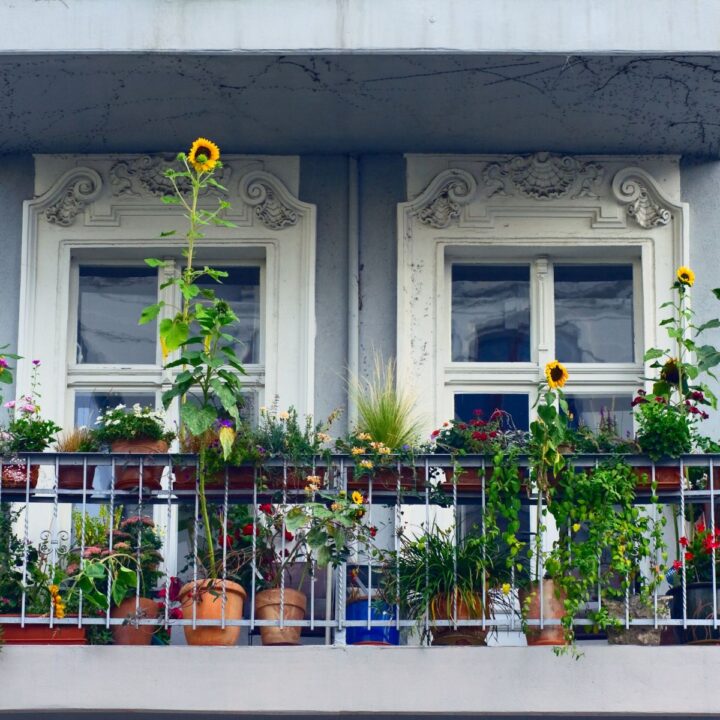
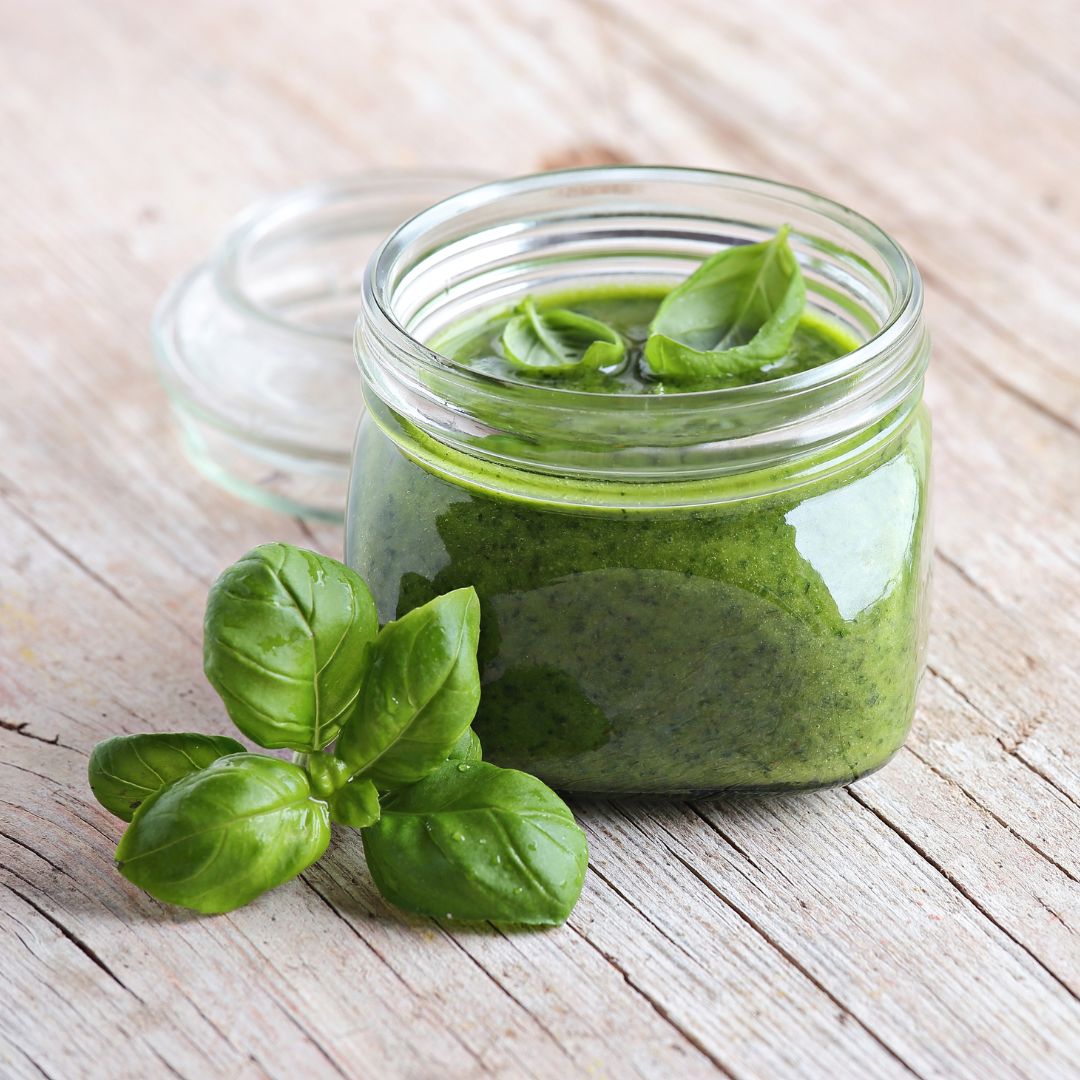
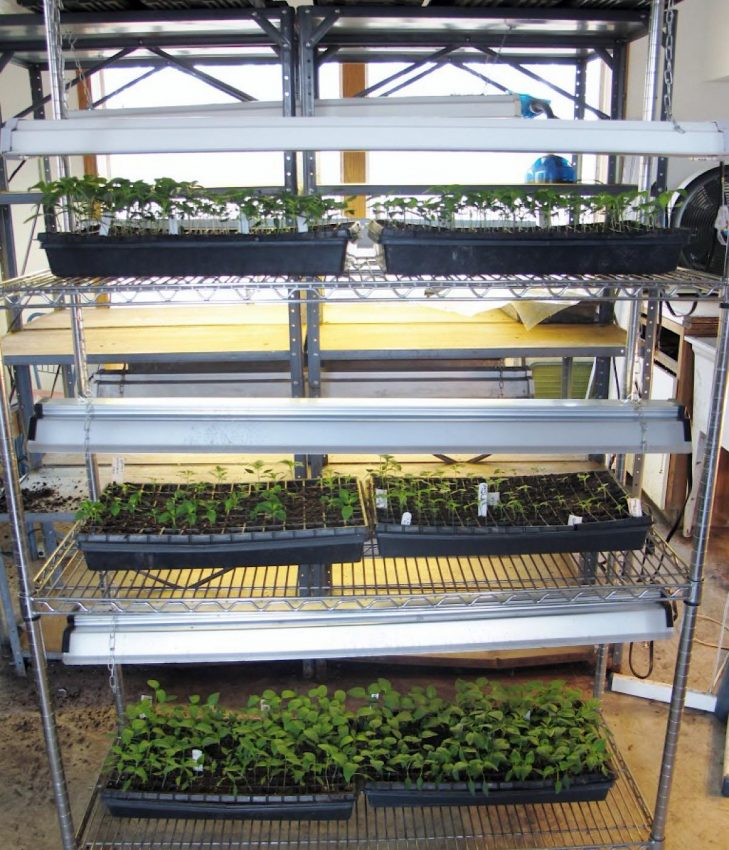
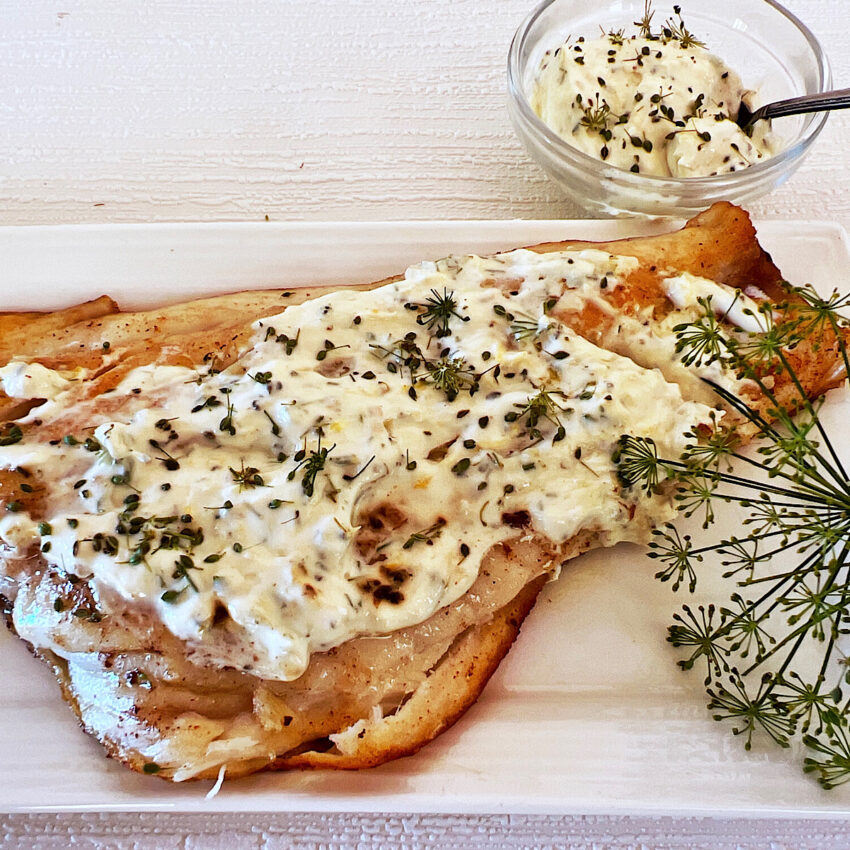
Leave a comment